Why visit the Seychelles?
Seychelles The Republic of Seychelles comprises 115 islands in the western Indian Ocean. It represents an archipelago of legendary beauty that extends from between 4 and 10 degrees south of the equator and which lies between 480km and 1,600km from the east coast of Africa. Of these 115 islands, 41 constitute the oldest mid-oceanic granite islands on earth while a further 74 form the low-lying coral atolls and reef islands of the Outer Islands. The granitic islands of the Seychelles archipelago cluster around the main island of Mahé, home to the international airport and the capital, Victoria, and its neighbouring islands of Praslin and La Digue. Together, these Inner Islands form the cultural and economic hub of the nation and contain the majority of Seychelles’ tourism facilities as well as its most stunning beaches.
What does Seychelles bring in mind?
Morne Seychellois National Park
While the dazzling coastline of Mahé is undoubtedly the main attraction, it is crucial that you take the time to explore the island's mountainous interior. One of Mahé's highlights, the splendid Morne Seychellois National Park encompasses an impressive 20% of the land area of Mahé and contains a wide variety of habitats, from coastal mangrove forests up to the country's highest peak, the Morne Seychellois. Choked in thick forest formation, the enigmatic, central part of the park is virtually deserted and can only be reached by walking trails; you don't have to go very far before the outside world starts to feel a long, long way away. Tea lovers will pause at the working tea factory. Free 20-minutes’ tour showing the tea-making process is conducted during opening hours, but it is best to visit before noon, when you can see the whole process from drying to packing.

|
Kopolia Peak While traveling through the Morne Seychellois National Park’s tropical paradise, hikers can work their way to the base of Kopolia Peak, the scene of a diverse ecosystem that is home to such flora as the carnivorous pitcher plant (we strongly advise you not to touch any pitcher plants) and stunning orchids. |
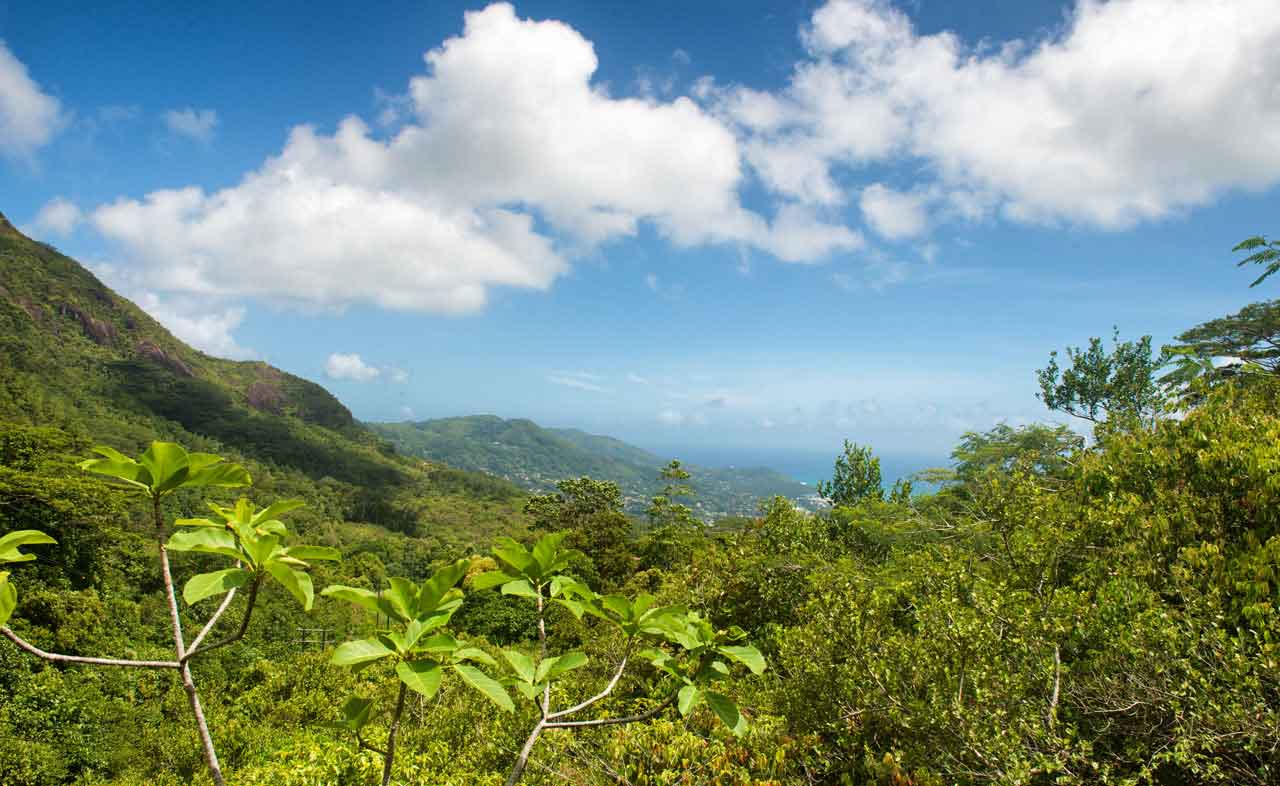 |
Victoria’s Secrets
A good amount of Seychelles’ history can be found in the capital city of Victoria. Originally settled in the 16th century by French colonists, it has remained a center of business and finance ever since. It has several museums and cathedrals that are definitely worth visiting when on you are on Mahé Island. You can explore it in a pleasant two-hour stroll. Highlights include a silver-painted replica of London's Little Ben - itself a miniature of Big Ben - and the islands' Natural History Museum. The streets are rarely busy, except on Saturday mornings, and there are many small shops where you can refuel with samosas. Go to the outdoor market in the morning to see the day's catch laid out: red snappers, grouper, mackerel, sharks and eagle rays. This is fish as fresh as it gets. Other stalls are stacked with colorful fruit, vegetables and spices. It's easy to fill a bag with exotic star fruit, mangos and coconuts.
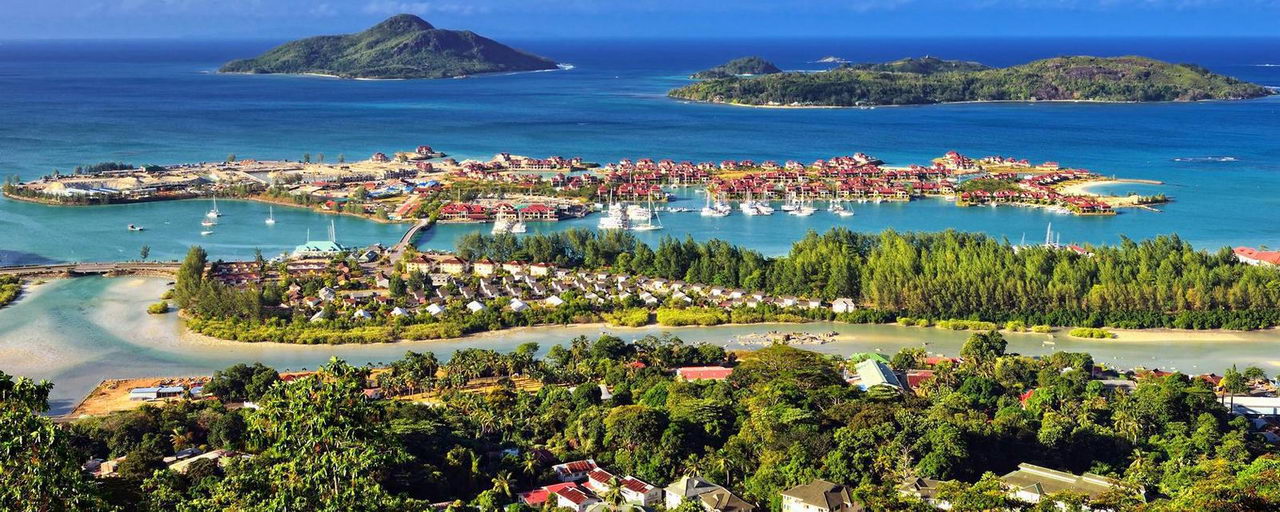
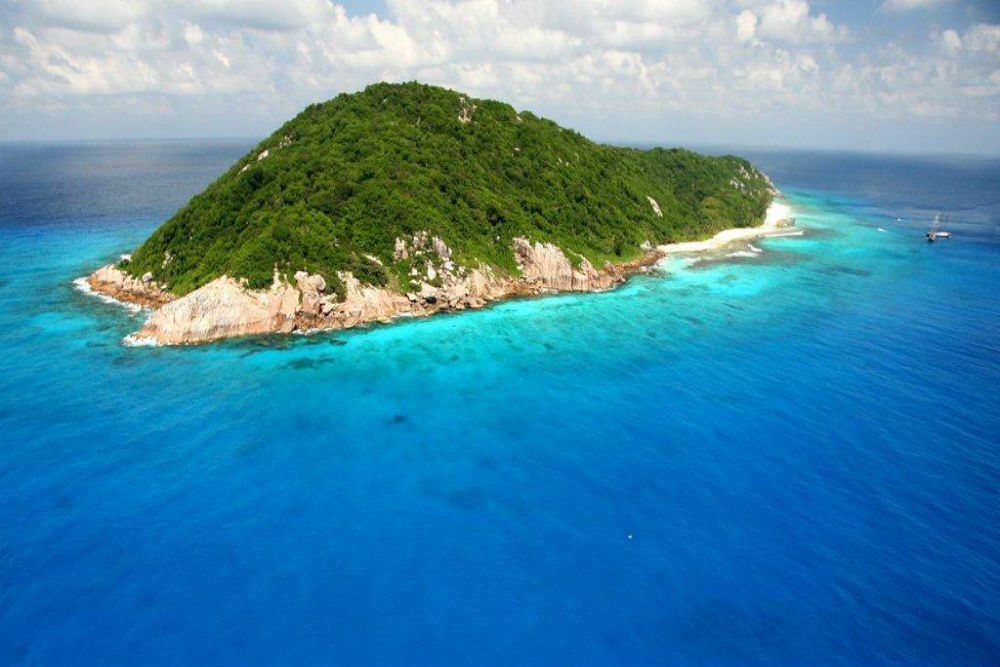 |
A Cadbury treat – Aride Island Aride Island is the nearest the Seychelles comes to its pristine state before it was discovered by the outside world. It is one of the finest tropical island nature reserves in the world, bought for posterity in 1973 by British naturalist Christopher Cadbury (of the chocolate-making family). There are more birds of more species here than on the other 40 islands combined, with a million breeding seabirds, and land birds found only here such as magpie robins, fodies and blue pigeon. The sweet-scented Wright's gardenia grows nowhere else. There is no accommodation, but there are daily boat trips. |
Vallée de Mai Nature Reserve
Praslin's World Heritage listed Vallée de Mai as one of only two places in the world where you can see the rare coco de mer palms growing in their natural state, not to mention more than 50 other indigenous plants and trees. Five hiking trails lead through this primeval, emerald- tinged forest, which remained totally untouched until the 1930s. As you walk amid the forest, the atmosphere is strange, with the monstrous leaves of the coco de mer soaring 30m to a somber canopy of huge fronds.
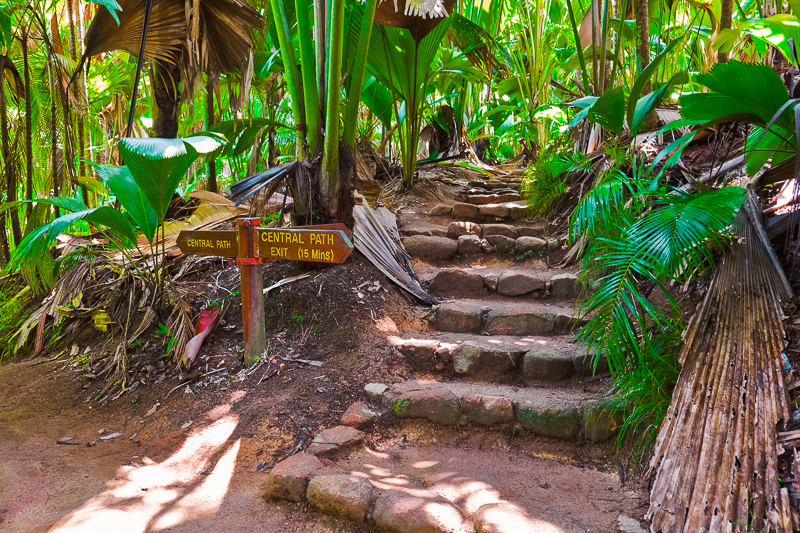
|
Shark Bank Mahé Island offers some of the best deep-water diving anywhere. Not only will you swim with massive and gorgeous tropical fish, but you will also spot white tip reef sharks, gray stingrays and many more marine creatures. |
 |
Things you shouldn’t miss in Seychelles
-
Rock climb and zipline
-
Scuba dive and discover the local marine life
-
Island Hop and spend a day on La Digue where you can cycle around the island and walk/hike the famous rock beaches.
-
Tour Victoria (capital of the largest island of Mahé); leisurely walk through the botanical gardens, tea plantation, and visit the local market to experience the sights and sounds of people buying local produce, vanilla, spices, and many more.
-
Enjoy the sun & watch every sunrise and sunset. Go on a sunset cruise, or watch the sun rise and set from your hotel or private beach. Picnic on a catamaran or go horseback riding on the beach or on island trails. Interact with the locals along the shore; watch local fishermen come in with their catch of the day.
-
Snorkel at Sainte Anne Resort and visit nearby Moyenne Island where you can hike around the island.
-
Enjoy the delicious Seychellois food: dine at the local Creole restaurants and enjoy the tropical fruits and refreshing drinks.
-
Visit Praslin (Second largest island) and walk through the Seychelles “Garden of Eden”, the Vallée de Mai, a UNESCO-designated nature reserve. You will walk under giant palms, and learn about the indigenous Coco de Mer, and if you are lucky, you will see a Black Parrot.
Best Islands of Seychelles
Mahé
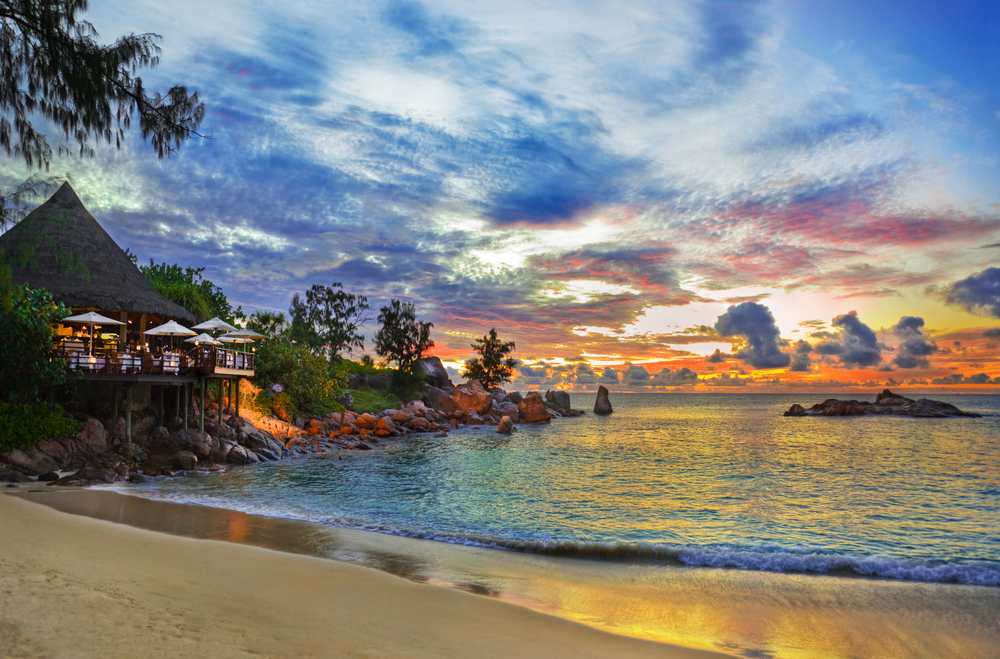
When it comes to wishing for the archetypal idyllic island, it's impossible to think past the glorious bays caressed by the gorgeously multi-hued waters of Mahé. To the northeast, a range of granite peaks, including Mahé's highest point, Morne Seychellois (905m), adds to this vivid panorama.
By far the largest and most developed of the Seychelles islands, Mahé (named by the French in honor of the 18th century governor of Mauritius, Mahé de Labourdonnais) is home to the country's capital, Victoria, and to about 90% of the Seychelles' population. Small wonder that it has excellent vacation and adventure opportunities, from exploring the mountainous jungle of the interior to diving pristine sites and snorkeling with whale sharks. Or just do nothing at all and flake out on porcelain-sand beaches. Wherever you are based, paradise lies close at hand; a bus or car ride of no more than 20 minutes will bring you to fabulous natural attractions.
Praslin
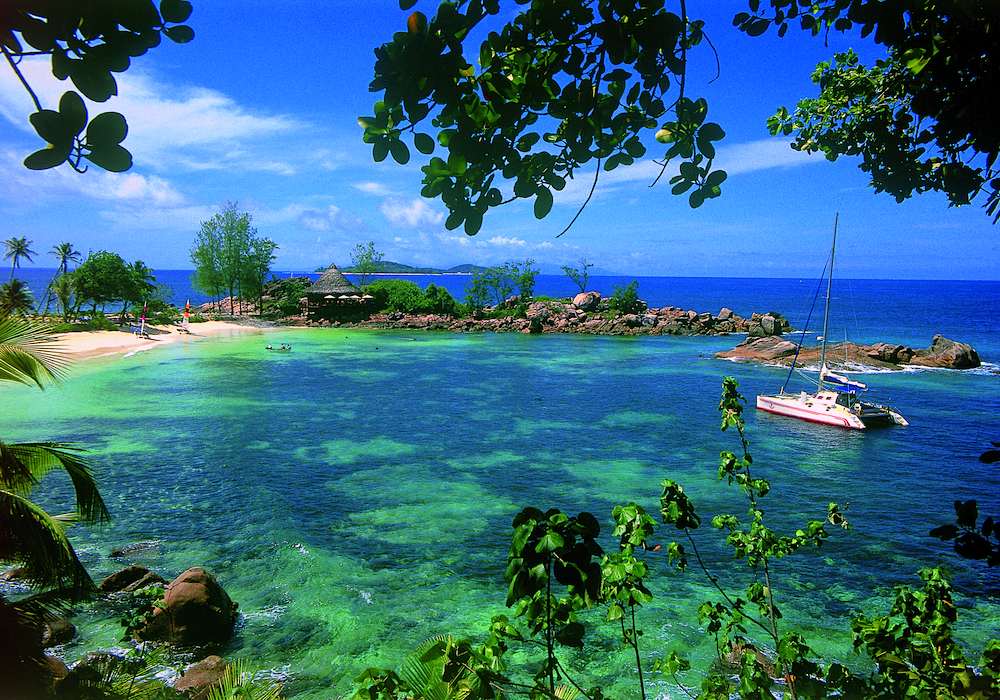
Praslin has lots of temptations: stylish lodgings, tangled velvet jungle, curving hills dropping down to gin-clear seas, gorgeous stretches of silky sand edged with palm trees and a slow- motion ambience. Lying about 45km northeast of Mahé, the second-largest island in the Seychelles falls somewhere between Mahé and La Digue. Like Mahé, Praslin is a granite island, with a ridge of small mountains running east–west along the centre.
The 5500 inhabitants of Praslin are scattered around the coast in a series of small settlements. The most important from a visitor's perspective are Anse Volbert (also known as Côte d'Or) and Grand Anse. At the southeast tip of the island is Baie Ste Anne, Praslin's main port. Scuba diving, snorkeling and boat excursions to nearby islands famed for their bird life will also keep you buzzing.
La Digue
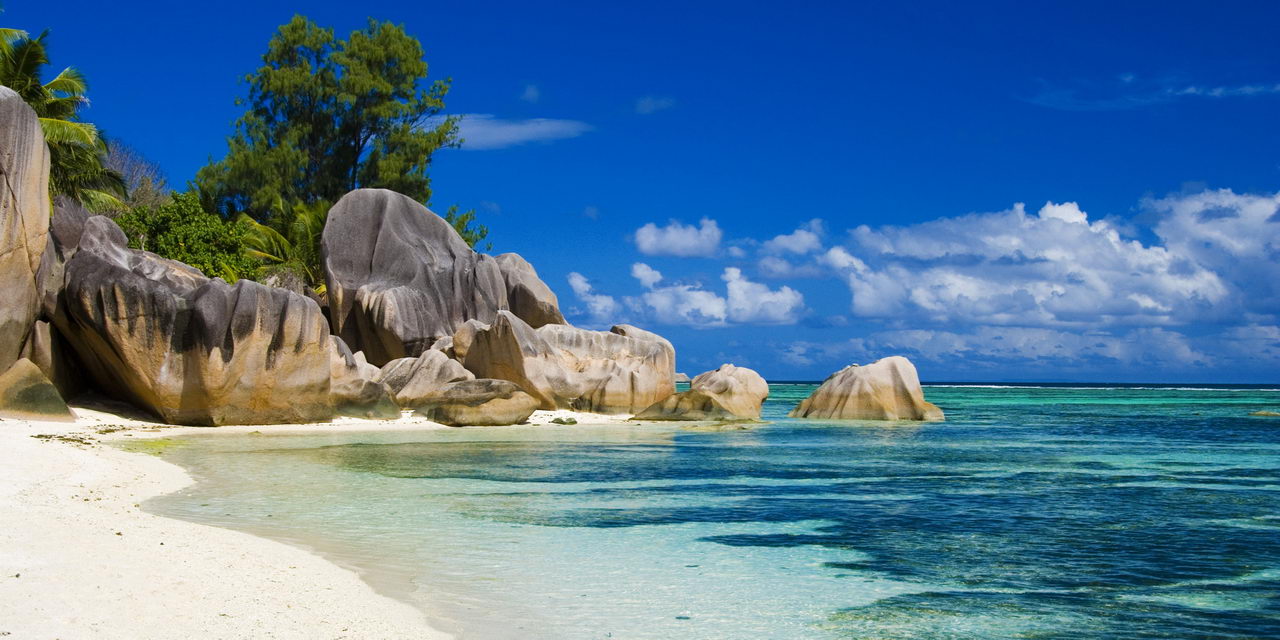
La Digue is ideally situated as a springboard to surrounding islands, including Félicité, Grande Sœur and the fairytale Île Cocos. Despite its abundant beauty, La Digue has managed to escape the somewhat rampant tourist development that affects Mahé and Praslin. Sure, it is certainly not undiscovered, but La Digue has a more laid-back feel than the other main islands, with only a few surfaced roads and virtually no cars, just the odd ox cart. The place is definitely more of a back-to-nature than a jet-set-tourist kind of haven, making it possible to find that deserted bay where you really feel like you have been stranded in paradise.
Transport to La Digue is oddly easy; it is only about 5km from Praslin, and getting by boat from one island to the other is simplicity itself, so you have no excuse not to spend a day or two at the very least on this island.
Entering this website you automatically agree the following terms and conditions even if You are not a registered user of the site. Images shown on the website, country and travel specifications, as well as the webdesignes are subject to copyright protection, Elegant Enterprises are All rights reserved. Prohibited the website all or partial copy, store, use, distribution and sale, without the written consent of the copyright owner of this website (Elegant Enterprises)